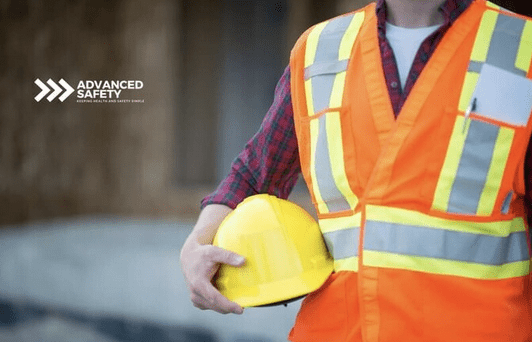Ensuring compliance with WorkSafe NZ regulations is more than just meeting legal obligations—it’s a vital investment in your employees' well-being and your business’s success.
By prioritising workplace safety, you minimise risks, protect your workforce, and foster a positive reputation for your company. This guide outlines everything you need to know about WorkSafe NZ compliance, from understanding legal requirements to implementing effective safety measures.
Why WorkSafe NZ Compliance Matters for Your Business
WorkSafe NZ compliance is essential for protecting employees from workplace hazards and ensuring your business operates within legal parameters. By adhering to the Health and Safety at Work Act 2015, you:
Mitigate risks of workplace accidents and injuries.
Avoid financial penalties and legal action.
Foster a culture of safety that improves employee morale and retention.
Failing to comply can result in severe consequences, including reputational damage, reduced productivity, and costly compensation claims.
Want to Improve Your Workplace Safety?
Contact Advanced Safety for professional guidance and support.
Contact Us TodayLegal Requirements for WorkSafe NZ Compliance
The Health and Safety at Work Act 2015 is the cornerstone of workplace safety in New Zealand. Key requirements for compliance include:
Hazard Identification and Risk Management
Employers must identify potential hazards, assess risks, and implement control measures to minimise them.Training and Supervision
Employees must receive adequate training and supervision to safely perform their roles.Record Keeping
Maintain accurate records of risk assessments, incident reports, and training sessions.Emergency Preparedness
Have clear evacuation plans and first-aid protocols in place.
By meeting these legal requirements, businesses demonstrate their commitment to protecting employees and avoiding potential penalties.
Benefits of WorkSafe NZ Compliance
Complying with WorkSafe NZ regulations offers tangible benefits, including:
Reduced Workplace Incidents: Proactive safety measures minimise accidents, injuries, and illnesses.
Cost Savings: Avoiding accidents reduces expenses related to medical claims, legal disputes, and downtime.
Enhanced Employee Morale: A safe work environment fosters trust and loyalty among employees.
Stronger Reputation: Customers and stakeholders value companies that prioritise safety and well-being.
Common Workplace Hazards and Solutions
Addressing workplace hazards is a key component of WorkSafe NZ compliance. Below are some common hazards and practical solutions:
1. Physical Hazards
Examples: Slips, trips, falls, and machinery accidents.
Solutions: Maintain clean workspaces, provide protective gear, and conduct regular safety inspections.
2. Chemical Hazards
Examples: Exposure to hazardous substances or gases.
Solutions: Properly label and store chemicals, provide PPE, and train employees on safe handling practices.
3. Ergonomic Hazards
Examples: Poor workstation setup or repetitive motions.
Solutions: Offer adjustable desks, ergonomic chairs, and training on safe lifting techniques.
4. Psychosocial Hazards
Examples: Workplace stress, bullying, or harassment.
Solutions: Implement policies promoting mental health, encourage open communication, and provide stress management resources.
Developing a WorkSafe NZ Compliance Plan
A well-structured compliance plan ensures your business meets WorkSafe NZ standards. Steps to develop your plan include:
Assess Risks
Conduct thorough risk assessments to identify potential hazards.Define Policies and Procedures
Develop clear guidelines for safety practices, hazard management, and emergency response.Train Employees
Provide tailored training programs that address specific job roles and risks.Monitor and Evaluate
Regularly review your compliance plan to ensure it aligns with current regulations and industry standards.Engage External Professionals
Consider hiring professional health and safety consultants to audit your workplace and offer expert advice.
Implementing WorkSafe NZ Compliance in Your Business
Compliance isn’t a one-time task—it’s an ongoing commitment. Key steps to implement compliance effectively include:
Leadership Buy-In
Senior management must actively support workplace safety initiatives.Employee Involvement
Encourage workers to participate in identifying hazards and improving safety practices.Safety Audits and Inspections
Conduct regular audits to identify gaps and make necessary improvements.Technology Integration
Use software to track compliance activities, manage incident reports, and monitor safety training.
Training Employees for WorkSafe NZ Compliance
Employee training is critical to fostering a safe workplace. Consider the following training strategies:
1. Induction Training
Cover workplace hazards, emergency procedures, and safety expectations during onboarding.
2. Role-Specific Training
Tailor training to specific job responsibilities, such as operating machinery or handling chemicals.
3. Refresher Courses
Regularly update employees on changes to safety protocols and regulations.
4. Engagement and Awareness
Use team meetings and posters to keep safety top of mind.
Conducting Safety Audits and Inspections
Regular audits and inspections help ensure ongoing compliance. Steps include:
Schedule Regular Audits
Establish a routine for conducting safety audits.Engage Auditors
Use internal staff or external consultants with expertise in WorkSafe NZ regulations.Review Policies and Procedures
Ensure they align with the latest legal requirements and best practices.Physical Inspections
Check equipment, workspaces, and emergency exits for potential hazards.Implement Action Plans
Address gaps identified during audits and monitor progress.
Conclusion: Prioritising WorkSafe NZ Compliance for Long-Term Success
WorkSafe NZ compliance is essential for creating a safe and successful workplace. By meeting regulatory standards, addressing common hazards, and fostering a culture of safety, you protect your employees and strengthen your business.
Proactive compliance not only mitigates risks but also enhances your brand reputation and positions your company as an industry leader. Make WorkSafe NZ compliance a priority and secure the future of your business.


